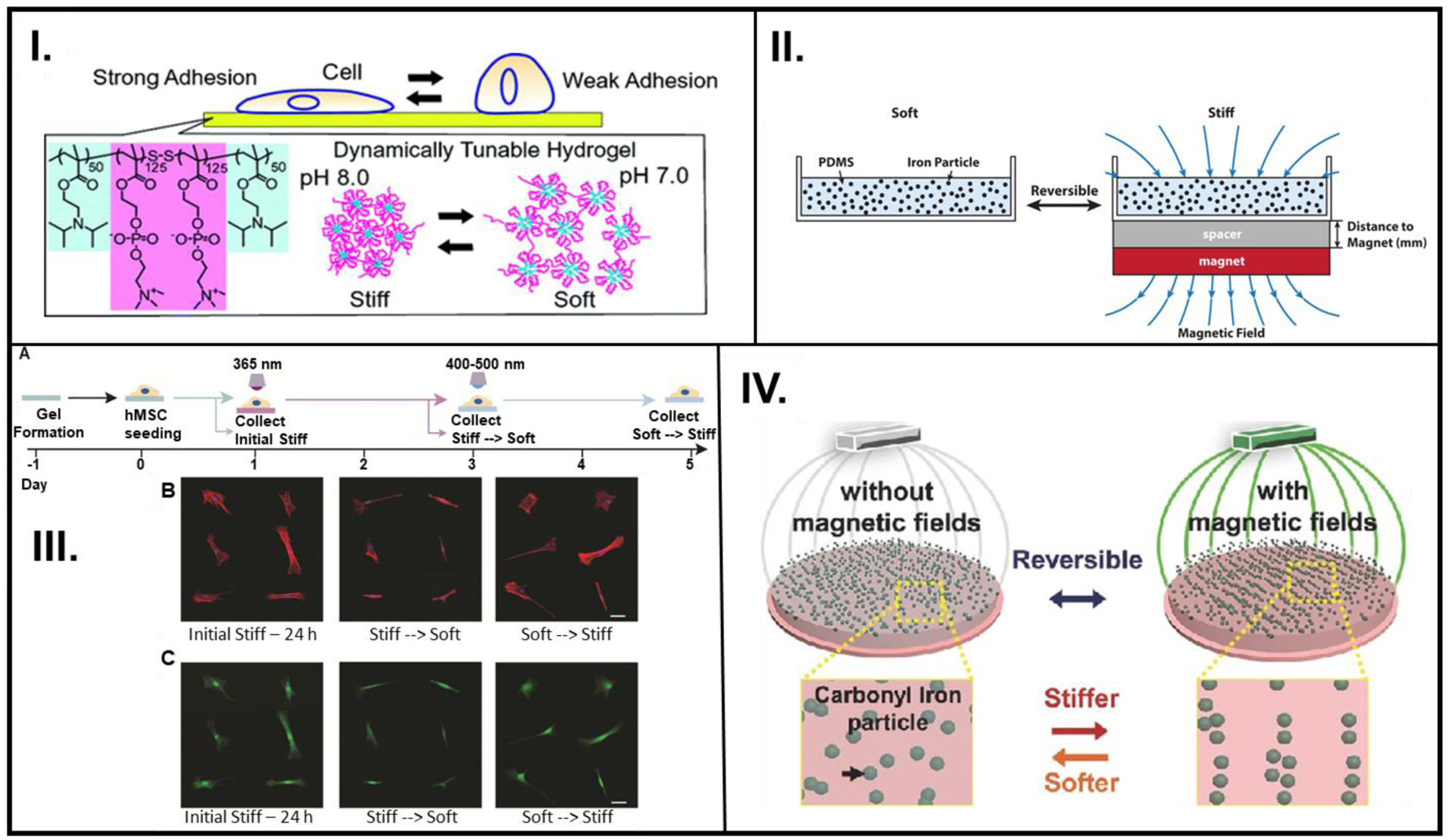Figure 3.

pH, magnetic field, or light employed in a reversible/repeatable manner to study cell activity. (I.) A reversibly pH-responsive PDPA-PMPC-PDPA copolymer that is favorable for cell adhesion (pH 8) and cell averse (pH 7). (II.) Employing magnetic field to reversibly control the arrangement of iron particles in polymeric material composed of PDMS with embedded iron particles. (III.) (left to right) Hydrogel formation, 400–500 nm irradiation causes crosslinking of MA groups (A), Representative images of f-actin stained (red) and nuclei (blue) (B), and YAP/TAZ (green) stained cells (C) as they go through the stiff-soft-stiff phases. (IV.) A pAAm gel was synthesized using free radical chemistry, where the pAAm-based polymer containing CI particles can reversibly transition between stiff and soft phases based on the alignment of CI particles. A: Reprinted with permission from reference [16] Copyright (2011), American Chemical Society, B: Reprinted with permission from reference [51] Copyright 2019, American Chemical Society, C: Reproduced from reference [22] Copyright 2017, with permission from Elsevier, D: Reproduced from reference [50], Copyright 2016, with permission John Wiley and Sons.
